| Admissions | Accreditation | Booksellers | Catalog | Colleges | Contact Us | Continents/States/Districts | Contracts | Examinations | Forms | Grants | Hostels | Honorary Doctorate degree | Instructors | Lecture | Librarians | Membership | Professional Examinations | Programs | Recommendations | Research Grants | Researchers | Students login | Schools | Search | Seminar | Study Center/Centre | Thesis | Universities | Work counseling |
|
Refer to #1 in your Study Guide. There are a number of different methods of classifying plants as well as a number of different reasons for classifying plants. Presented here are two of the major reasons that plants are classified by one or more of the different methods. First, plants are classified to uniformly categorize the more than 300,000 plant species that exist and the second reason for classifying plants is to avoid any confusion when referring to a particular plant as is now the case when a common name is used. You are probably aware that common names for many plants vary from one area of the country to another. A good example is Redroot Pigweed. Redroot Pigweed is the commonly accepted common name for what is referred to in this area as Careless Weed. However, in other parts of the country, this weed is called Pigweed or Redroot, or a. number of other different common names. One of the reasons for using a scientific means of classifying plants is to avoid confusion when referring to a particular plant. As indicated, there are also a number of different means or ways of classifying plants. The one used most often in scientific circles is that of the scientific method or botanical method. The scientific or botanical method classifies plants according to commonly accepted rules or laws of scientific nomenclature. Other means of classifying plants include the classification based upon life span, on growth habit, on climatic adaptation, on water requirement, and on the use of a particular crop. As we progress through this section, we will look at these different means of classifying plants. Terms
The first method of classifying plants to be studied is that of the scientific or botanical method. To fully understand the scientific method a number of terms must be understood. At this time refer to number 2 in your Study Guide. The first term is that of "taxon" which is the singular form of the word. The plural form is taxa. Taxon then is a term or group of terms used to describe the units in the classification scheme. This would include such breakdown categories as Kingdom, Division, Class, Sub-class, Order, Family, Genus, and Species. We will be looking at these in more detail shortly. The second term is that of "taxus" which is from the Greek meaning arrangement or to arrange. Terms
The next term is that of "Nomus" which is a word meaning law. Therefore Nomus is the law that governs the classification of plants by an accepted standard. The fourth term is that of "Taxonomy". Taxonomy is the science dealing with the describing, naming, and classification of plants. The Father of Modern Taxonomy is Lineaus. Lineaus was an early botanical taxonomist and as a result of his very exacting work he has been given the honor of being referred to as the "Father of Modern Taxonomy." Eight major Taxa
Refer to No. 3 in the study guide. In the scientific or botanical method of classifying plants, there are several taxa or terms used to classify plants. However, we will only enumerate and use eight of them. First is the most broad category - that of "Kingdom". Kingdom refers to whether a particular organism fits into the plant or animal kingdom. Of course, all of the agronomic crops, and plants in general, would fit into the plant kingdom whereas animals, and humans, would fit into the animal kingdom. Certain authorities recognize other kingdoms for other forms of life, however, for our purposes, we will mainly enumerate only these two with the major emphasis being placed upon the plant kingdom. The second category is that of division and the classification of an organism into a particular division is based upon whether or not the plant bears or produces seeds. For the most part, since nearly all agronomic crops produce seeds, we will limit our discussion to only one division.
The third category is that of Class. The categorization of a particular plant into a specific class is dependent upon whether the seed produced by the plant are borne in a fruit or are naked (that is not produced in a fruit). Again, for the purpose of studying the agronomic crops, we will limit our discussion to only one class - that being the one in which the plants produce the seeds in some type of fruit structure. The fourth category is that of sub-class and the sub-class classification is dependent upon whether the seed produced by the plant contains one seed leaf (or cotyledon) and hence would be referred to as a monocotyledon or if it has two cotyledons, and therefore, would be referred to as a dicotyledon type plant.
The fifth category is that of "order". The assigning of a particular plant to an order is based upon differences and similarities of various reproductive and vegetative structures. The sixth category is that of "family" and again the classification of plants into a particular family is based upon the differences and similarities of various vegetative and reproductive structures.
Category number 7 is that of "genus". The classification of a particular plant into one of the several genuses is based upon whether the species contained with the particular genus shows close genetic affinities. The eighth category that we will be looking at is that of species. The categorization of particular plants into a certain species is based upon them being a population of related and interbreeding forms. If so they would be in the same species - if not they would be categorized into separate species.
Pictured here is the corn plant to illustrate the classification scheme for this particular type of plant. You will want to copy this into your study guide. . . . . . . . . . Classification of Corn Kingdom - Plantae Beginning at the top with the kingdom classification, corn belongs to the plantae kingdom, ie. it belongs to the plant as opposed to the animal kingdom. The next classification category is that of division and corn would be in the spermatophyta division. It is in the spermatophyta division because it is a seed bearing plant. Again most of the agronomic crops that we deal with do produce seed or are seed bearing plants and therefore will be in the spermatophyta division. The next category is that of class. Corn, as well as nearly all of our agronomic crops belong to the angiospermae class. Angiospermae indicates that the seeds produced by the plant are produced in a fruit type structure. For example, soybeans are produced in a pod, corn in the husk, etc. The other major class is that of gymnospermae which is a class of plants in which the seed are borne naked or not in a fruiting structure. Good examples of plants that would be in the class of gymnospermae and henceforth bear naked seed would be plants like pine, fur, and spruce. The next break-down is that of "sub-class." Corn belongs to the sub-class of monocotyledonae in that the embryo of the seed only has one seed leaf or cotyledon. By way of review, most of our agronomic crops belong to the plantae kingdom, the spermatophyta division, and the angiospermae class. It is at the sub-class level that many of our crop plants begin to diverge in terms of their classification. As indicated, corn belongs to the monocotyledonae sub-class meaning again that it is a plant that produces a seed with only one enclosed cotyledon or seed leaf. The other sub-class that contains the dicotyledonous type plants are those that have two cotyledons per seed and would be in the dicotyledonae sub-class. The next category for corn classification is that of "order". The corn plant belongs to the order of graminales. The next category is that of "family"-and for corn it would be graminae or in the grass family since it is a grass-type plant. The last two classification categories are those of genus and species and is the most frequently referred to when classifying plants. In other words, whenever we normally hear the Latin names for corn, or other crops, it is usually that of the genus and species only and is referred to as the Latin binomial or referring to the Latin two names. The corn plant then belongs to the genus "Zea" and the species "mays". As indicated earlier, when referring to most of our crops, for example corn, one would say that the scientific name is Zea mays, here only referring to the genus and species.
This picture shows a typical example of a dicot or broadleaf type plant and here is represented by soybeans. . . . . .
Classification of "Soybeans" Kingdom - Plantae This shows the classification scheme for soybeans and you will want to record it in your study guide. Again it may be noted that the kingdom is that of plantae and the division is spermatophyta - again because it is a plant and bears seed. The class for soybeans is that of angiospermae - angiospermae meaning again that the seed are enclosed in a fruit type structure - for soybeans this would be the pod. At this point the classification begins to differ from that of corn in that soybeans as well as most of our other broadleaf type agronomic plants have two cotyledons or seed leaves contained in each seed. Hence the sub-class for soybeans would be dicotyledonae. The order for soybeans would be that of rosales, and the family would be that of Leguminosae. Soybeans belong to the Leguminosae family because they are leguminous type plants or plants that are capable of symbiotic N-fixation. The genus would be Glycine while the species is max. Hence the Latin binomial for soybeans would be Glycine max - again referring only to the genus and species. Another point that you should be aware of at this time is that the different taxa or terms used to categorize plants that we have just gone through is divided into what is referred to as major taxa and minor taxa. The major taxa would include kingdom, division, class, order, and family, whereas, the minor taxa includes genus, species, and any other classifications that the plants might be further subdivided into. Another point of interest that you should be aware of is that the classification scheme for many plants is not universally accepted even though these names are assigned using taxonomic laws. Therefore, in some of the literature you read, you may see some discrepancy in the overall classification scheme. However, there is relatively good agreement among taxonomists in classifying plants from family on down through the species. The discrepancy, if such exists, usually will be in the order, class, and division categories. Life Span
Plants as we indicated earlier may be classified in a number of other different ways; one of which is according to life span. At this time also refer to #4 in your Study Guide. Based upon life span, we have three categories of plants. These are the annuals, the biennials, and the perennial type plants. As indicated above, an annual plant is one that completes its entire life cycle in less than one year and are usually perpetrated by the seed. Now, within the annual type plants, we have those that are classified as winter annuals while others are classified as summer annuals. A winter annual type plant would be one that is planted and germinates in the fall and lives in the vegetative state over the winter and then produces seed the following spring or early summer.
This is a photograph of a wheat plant and would be classified as a winter annual type crop. . . . . .
The other type of annual would be that of the summer annual type plants. These types of plants are planted and germinate in the spring of the year, grow all through the summer and produce seed during the late summer or early fall. An example of a summer annual as cultivated in this area would be grain sorghum. . .
Life Span
The second type of plant based upon life span would be that of a biennial. A biennial would be a plant that lives more that one year but not over two years. Usually during the first year the plants store food reserves and the second year they flower and set seed. Examples of biennial type plants would be sugar beets, carrots, and onions. And the third type of plant would be the perennial type plants and they would be defined as plants that live for more that two years. An example of a perennial type plant would be johnsongrass. Growth Habit
Another means of classifying plants is that based upon growth habit. In this particular category there are basically two types: those being the woody and herbaceous type plants. Also at this time refer to number 5 in your Study Guide. The first type of plant based upon growth habit is that of the woody type plants. Woody type plants are those that develop extensive secondary stem tissue. Within the woody classification, there are two basic sub-types; those being the evergreen and deciduous type plants. The evergreen type plants are those that keep or retain their leaves throughout the year, whereas the deciduous plants would be those plants that drop their leaves sometime during the year and usually this is during the winter season.
This picture is a shot of some typical evergreen type plants. Shown here are some taxus plants. Again these are the type that retain their leaves throughout the year. . . . . . . . . .
This is a picture of a typical deciduous type plant. Most trees common to this area retain their leaves during the spring, summer, and fall of the year, however, in late fall and early winter they will shed their leaves. . . . . . . .
Growth Habit
The second type of plant based upon growth habit is that of the herbaceous type plants. A herbaceous plant is one that is succulent and has very little secondary tissue.
This is a picture of a squash plant and would be representative or indicative of a herbaceous type plant. . . . . . . . .
Climatic Adaptation
Another means of classifying plants is based upon climatic adaptation. At this time refer to #6 in your Study Guide. Within this means of classification we have three main types of plants. The first type of plant based upon climatic adaptation is that of the tropical type plants. These are the plants that grow in the tropical areas or warm climates where freezing occurs very rarely, if ever. In general, the tropical area runs from approximately 20° south latitude to 20° north latitude. In most cases, tropical plants do shed their leaves for a portion of the season, however, it is usually only for a very brief period of time. The second type of plants based upon climatic adaptation would be that of the temperate plants. These are the plants that grow in the temperate climates or in climates where there is a very distinct winter season. This region runs from approximately 20° N. latitude to 60° N. latitude. Hence, most of the crops grown in this area would be the temperate type. The temperate zone can be further subdivided into three different regions. The first of these is the sub-tropical areas and are those areas that border on the tropical areas. Here freezing does occur but is usually for very short periods of time and the temperatures do not go much below freezing. Florida and southern Texas would be examples of sub-tropical areas. The true temperate region as far as the U.S. is concerned would be the areas ranging from the mid-to southern states on up through the northern portions of the United States and into Canada. The third division of the temperate area would be that of the boreal regions. The boreal region or subdivision of the temperate zone would be those areas bordering on the Arctic areas. Certain areas of Alaska then would be considered in the temperate zone, however, they border very closely to the Arctic area. Climatic Adaptation
The third type of plants would be those that are referred to as arctic plants and hence grow in the arctic areas. These would be the plants that grow in areas where most of the season is cold to very cold. The arctic area runs from approximately 60° ' N. latitude to 80° N. latitude. An example of an arctic area would be conditions such that exists in northern Alaska. Water Requirement
Another means of classifying plants is based upon their water requirements. Also refer to # 7 in the Study Guide. The first type of plant based upon water requirement would be the hydrophytes. These are the plants that grow where water is very abundant. Examples of hydrophytes would be cattails, water lilies, and other plants that grow in and around water. The second type of plant based upon water requirement would be the mesophytes. These would be the plants that grow where the amounts of water are intermediate. Most of our agronomic crops like cotton, grain sorghum, and corn would be indicative or representative of the mesophyte type of plants. Water Requirements
The third type of plant based upon water requirement is that of the Xerophytes. These are the plants that grow in very dry areas. Many of the desert plants such as cactus, etc. would be representative of the xerophytes. Based on Use
The last means of plant classification to be discussed-in this section is that of classifying crops based upon their use. Refer to and fill in section 8 of your Study Guide. Many of these classifications will be the lay, or more commonly accepted classification, names. First is the cereal crop. A cereal crop may be defined as a crop that is grown for its edible seed. A second type of crop grown is the forage crop. A forage crop is one grown for the vegetative matter that is produced and is in turn fed to livestock. Sometimes the reproductive structures will be harvested with the vegetative matter and then fed to the animal.
Shown here is a picture of several wheat heads. This would be representative of the cereal crops in which the seeds are grown for their edible seeds. Other examples would be grain sorghum, corn, barley, etc. . . . . .
This photograph depicts a forage crop shown here as a grass pasture. Again a forage crop is one that is grown for the vegetative matter which will be fed to livestock. . . . . . Based on Use Forage Crop:
There are several uses or subdivisions of forage crops depending upon how the vegetative matter is used or fed to livestock. The first division of forage crops is that of a silage crop. A silage crop is a crop that is harvested and stored in a green and succulent condition, allowed to ferment to some extent, and then is used for livestock feed. In this particular case, the green vegetative material would be harvested and put in a silo for storage and then removed periodically for feeding to livestock. A good example of a silage type crop would be that of corn in which it would be harvested during the soft dough to hard dough stage, chopped up, and then stored in a silo.
This picture shows an empty silo or trench in the ground in which the chopped up green vegetative succulent material would be stored and then removed periodically for feeding to livestock. Several other types of silos are used other than the ground silo shown here. . . . Based on Use Forage Crop:
Another type of forage crop is that of the pasture crop. A pasture crop is one that is grown to be grazed by livestock. A third type of forage crop is that of a hay prop and would be defined then as a crop that is cut, allowed to dry and the vegetative matter fed dry to the livestock usually after forming into bales.
This picture depicts a pasture crop in which the livestock are allowed to free-graze across the area so that a pasture crop then is one that is grazed by livestock. .. . . . .
This photograph depicts the hay type crop in which the crop was harvested or cut, allowed to dry, put up in bales, and then in turn the bales of hay, shown in the right background of this slide, will be fed to the livestock. In some cases the hay may be further processed into cubes as is shown in this picture. . . . Based on Use Forage Crop:
A fourth type of forage crop is that of the soiling crop. A soiling crop is one that is cut and its vegetative material fed green and succulent to livestock. In some cases this may be referred to as "green chop". The main difference between this type of crop and a pasture crop is that the material is harvested and then fed to the livestock whereas in a pasture crop the livestock would be allowed to free-graze and harvest the vegetative material themselves. Based on Use
Another type of crop based upon use is that of the green manure crop. A green manure crop is one that is grown and plowed under or into the soil while in a green and succulent condition for the improvement of the soil. In this particular case, when the vegetative material is turned under the soil and begins to decompose it returns not only nutrients to the soil but also increases the organic matter content of the soil and increases the desirability of the soil for growing other crops. Based on Use
Another type of crop based upon use is that of a companion crop. This would be defined as a crop, usually a small grain crop such as wheat, oats, rye, or barley, that is planted and grown with a seedling such as alfalfa to obtain a return form the land and or to prevent soil erosion while the forage or other seedling is becoming established. A good example of a companion crop would be the interseeding of rye, which is a cold hardy crop, with alfalfa during the fall of the year. In many cases the establishment of an alfalfa pasture is very desirable, however, the alfalfa seeded in the fall may not be hardy enough to over-winter that first winter season. By interseeding rye, which is a cold tolerant crop, with the alfalfa, the rye and the alfalfa will both germinate and begin vegetative growth very soon. During the winter season then the rye, again being a cold tolerant crop, will provide insulation to protect the developing alfalfa seedlings. During the following spring, the rye will mature and die since it is an annual crop leaving a pure stand of alfalfa. The alfalfa will continue to grow through the spring and summer and by the following winter will be established enough to survive severe winters. Therefore, the companion crop, or rye in this case, was planted and grown with the alfalfa seedling to allow it to become established. Based on Use
Another type of crop based upon use is that of a "small grain crop". The small grain crop classification refers to any grain crop in which the seed are smaller than corn and would be used for the edible seed. Examples here would be wheat, oats, barley, rye, and other crops of this nature. Another crop based upon use is that of an oil crop. As the name implies, an oil crop would be one that is grown for its oil. Examples of oil crops would be sunflower, sesame, soybean, peanut, and other crops of this nature. Another classification of crops based upon use is that of a fiber crop. A fiber crop would be grown for its fiber and probably the most outstanding example of a fiber crop would be cotton.
This picture shows a sample of wheat seed and since the seed are smaller than that of corn and used for its edible seed it would then be classified as a small grain crop. . . . . .
This photograph depicts a field of sunflowers and would be indicative or representative of an oil crop in which the seeds are harvested and the oil. extracted for various edible as well as other commercial uses. . . . .
This picture depicts a field of cotton and would be classified as a fiber crop in that the crop is grown and harvested largely for the fiber that it produces. However, in the case of cotton the seed is also used as a source of oil and high protein meal, but generally cotton is described as a fiber type crop. . . . . . . .
Based on Use
Another type of crop based upon its use is the root crop. A root crop is one that is grown for its edible root. Yet another type of crop based upon use is that of the tuber crop and it is one grown for its tubers.
This is an example of a root crop or one grown for its edible root. The example shown here is that of sweet potato in which the roots have become enlarged with carbohydrates and other materials and the harvested root is used as an edible entity.
. . . . . .
This is an example of a tuber crop, the Irish potato, in which the tubers or the specialized stems become filled with carbohydrates. We then harvest the tubers and then they are used as an edible product. . . . . . . . . . Based on Use
Another crop based upon use is that of the drug crop and is one that is grown for the drugs that it produces. An example of a drug removed from plants would be belladonna and digitalis. The belladonna is primarily a circulatory stimulant while the digitalis is primarily a heart stimulant and pulse regulator. Another type of crop based upon use is that of the cover crop. A cover crop is one that is grown to prevent water or wind erosion of the soil. In other words it is planted in areas to hold the soil in place instead of allowing it to be moved away - by either wind or water.
This picture shows a corn field with grass growing around the edges. This grass then acts as a cover crop in that it prevents erosion of the turn row and border areas.
|

 Figure
1
Figure
1 Figure
2
Figure
2 Figure
3
Figure
3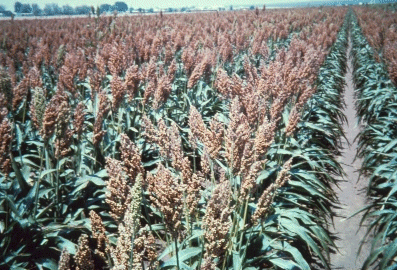 Figure
4
Figure
4 Figure
5
Figure
5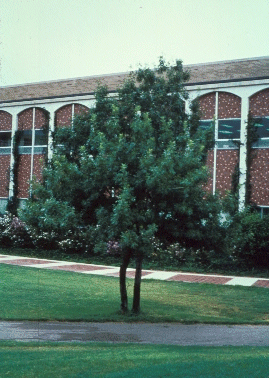 Figure
6
Figure
6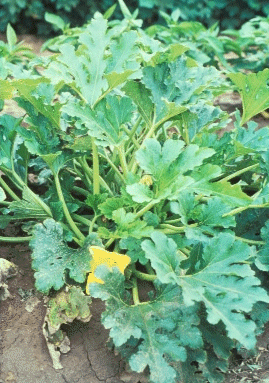 Figure
7
Figure
7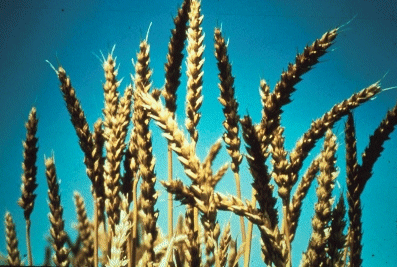 Figure
8
Figure
8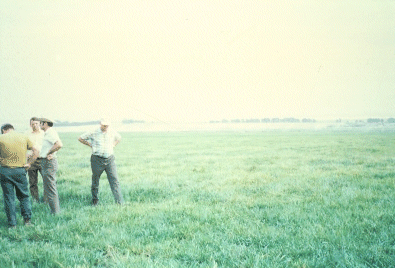 Figure
9
Figure
9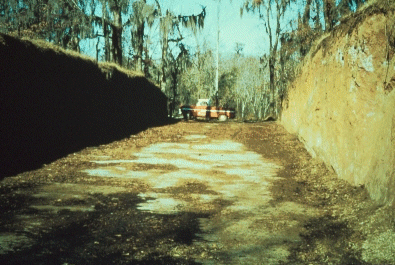 Figure
10
Figure
10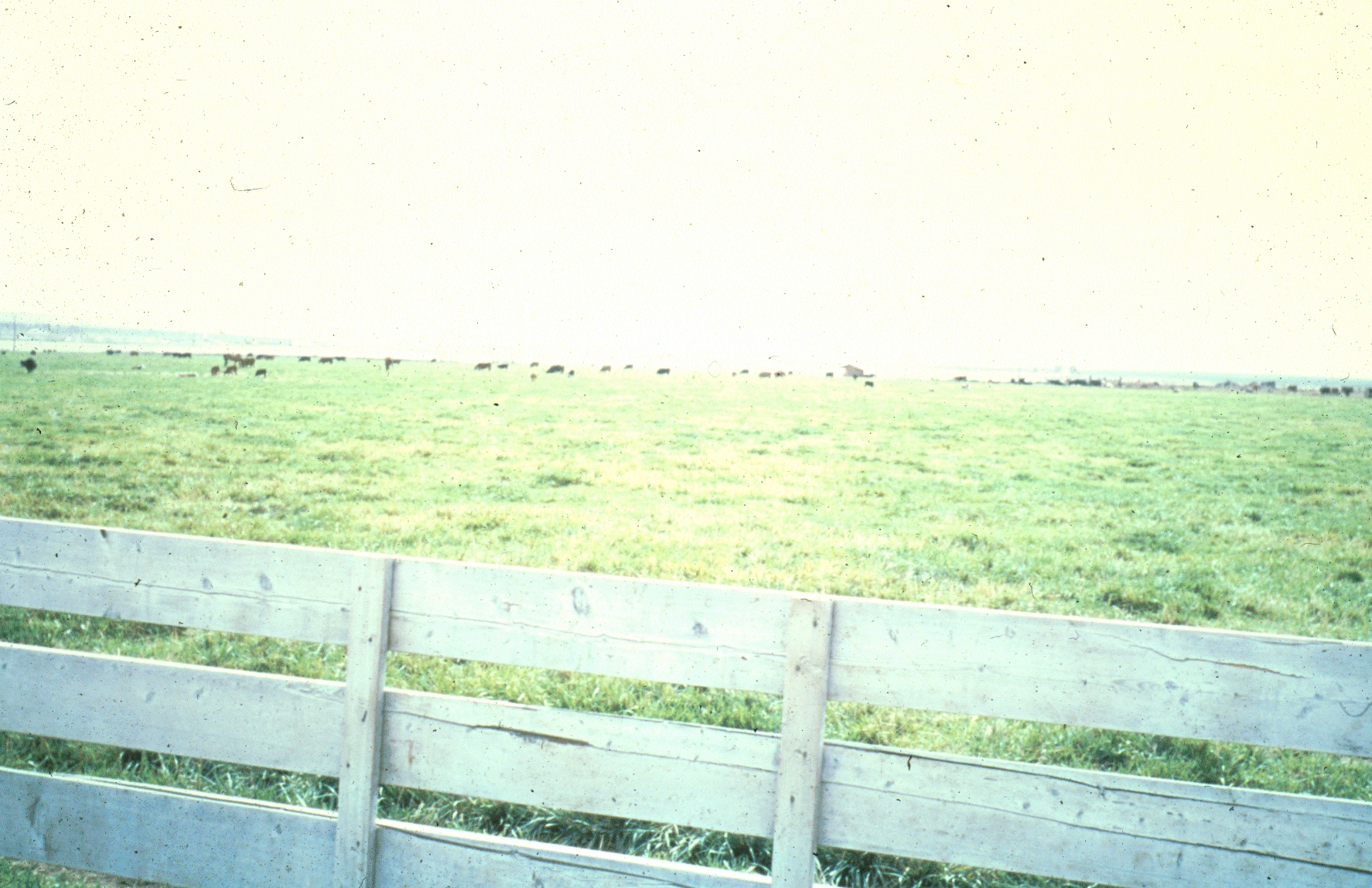 Figure 11
Figure 11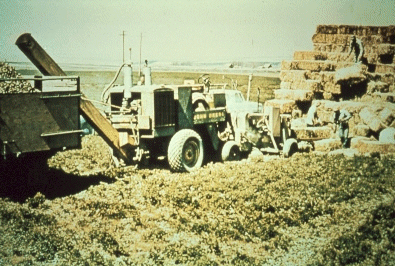 Figure
12
Figure
12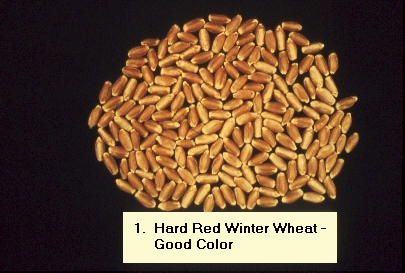 Figure 13
Figure 13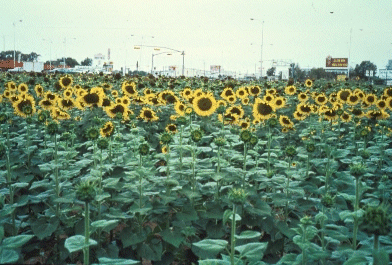 Figure
14
Figure
14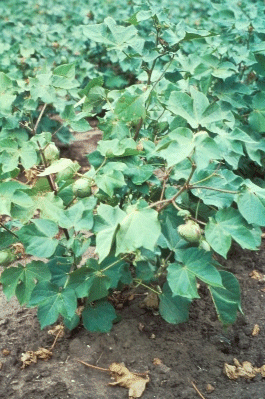 Figure
15
Figure
15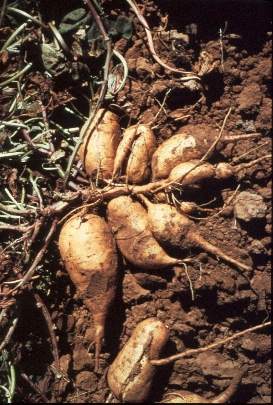 Figure
16
Figure
16 Figure
17
Figure
17 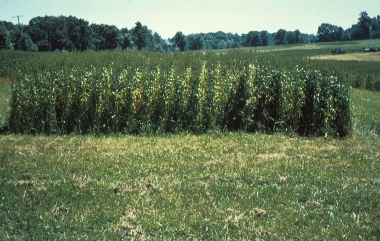 Figure
18
Figure
18